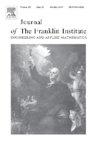基于分数阶正则化扩散机制的caputo导数驱动的Perona-Malik模型应用于磁共振图像处理
IF 4.2
3区 计算机科学
Q2 AUTOMATION & CONTROL SYSTEMS
Journal of The Franklin Institute-engineering and Applied Mathematics
Pub Date : 2025-08-07
DOI:10.1016/j.jfranklin.2025.107950
引用次数: 0
摘要
本文研究了一类新的非线性分数抛物方程,这些方程出现在图像处理领域。该模型具有卡普托分数阶时间导数与非线性分数阶梯度扩散相结合的特征。我们提出的模型旨在解决医学图像中有效去噪与精细特征保持之间的平衡问题。首先,我们研究了这些模型的理论可解性和数值应用。我们给出了关于弱解的存在唯一性的两个重要结果。第一个结果适用于扩散系数由对称矩阵决定且与解无关的情况。在这种情况下,我们利用Galerkin方法建立了解的存在唯一性。第二个结果涉及扩散系数包含非线性分数正则Perona-Malik机制的情况。为了证明在这种情况下弱解的存在性,我们主要使用Schauder不动点定理,并辅以新的技术估计。此外,我们通过对高斯噪声破坏的MRI图像进行数值实验来验证我们的理论发现。将该模型的性能与经典和最新的去噪方法进行了比较。视觉比较突出了模型保留精细解剖细节的能力。此外,使用PSNR和SSIM的定量评估显示优于传统模型的性能。结果证实,该模型在保留关键结构细节的同时实现了增强的去噪,使其成为具有挑战性的医学成像场景的强大而有效的工具。本文章由计算机程序翻译,如有差异,请以英文原文为准。
A novel Perona-Malik model driven by fractional regularized diffusion mechanism with caputo derivative applied to magnetic resonance image processing
This research paper addresses a new class of nonlinear fractional parabolic equations that emerge in the realm of image processing. The proposed models are characterized by Caputo fractional time derivatives combined with nonlinear fractional gradient diffusion. Our proposed model is designed to address the challenge of balancing effective noise removal with fine feature preservation in medical images. Firstly, we investigate the theoretical solvability and numerical application of these models. We demonstrate two significant results related to the existence and uniqueness of weak solutions. The first result applies to the scenario where the diffusion coefficient is determined by a symmetric matrix and is independent of the solution. In this case, we establish the existence and uniqueness of the solution using the Galerkin method. The second result concerns the situation where the diffusion coefficient incorporates a nonlinear fractional regularized Perona-Malik mechanism. To prove the existence of a weak solution in this context, we primarily use Schauder’s fixed point theorem, supplemented with new technical estimates. Moreover, we validate our theoretical findings through numerical experiments conducted on MRI images corrupted with Gaussian noise. The performance of the proposed model is compared against classical and state-of-the-art denoising methods. Visual comparisons highlight the model’s ability to preserve fine anatomical details. Additionally, quantitative evaluations using PSNR and SSIM demonstrate superior performance over conventional models. The results confirm that the model achieves enhanced denoising while preserving critical structural details, making it a robust and efficient tool for challenging medical imaging scenarios.
求助全文
通过发布文献求助,成功后即可免费获取论文全文。
去求助
来源期刊
CiteScore
7.30
自引率
14.60%
发文量
586
审稿时长
6.9 months
期刊介绍:
The Journal of The Franklin Institute has an established reputation for publishing high-quality papers in the field of engineering and applied mathematics. Its current focus is on control systems, complex networks and dynamic systems, signal processing and communications and their applications. All submitted papers are peer-reviewed. The Journal will publish original research papers and research review papers of substance. Papers and special focus issues are judged upon possible lasting value, which has been and continues to be the strength of the Journal of The Franklin Institute.

 求助内容:
求助内容: 应助结果提醒方式:
应助结果提醒方式:


